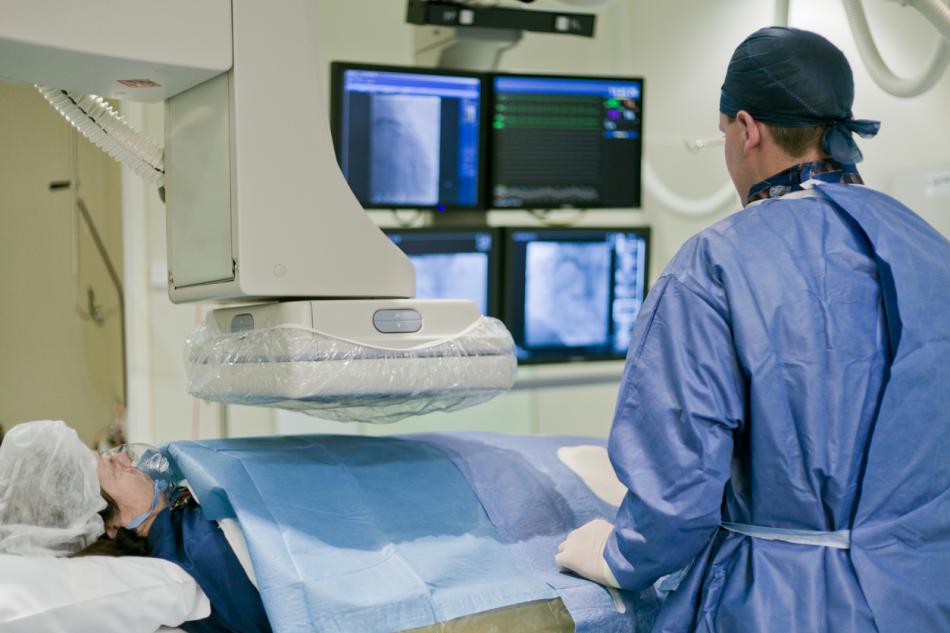Common reasons for coronary angiogram:
To look at narrowing of coronary arteries as part of chest pain investigation
To confirm and further assess findings after abnormal stress tests
As part of routine work-up for cardiac / heart valve surgery
What can I expect and how is it done?
You will usually be asked not to eat or drink for 4-6 hours before the proposed procedure. Invasive coronary angiogram will be performed by Dr Chai at Wexham Park Hospital Cardiac Catheterisation Laboratory (Cath Lab). It is usually a day-case procedure but may require overnight stay if performed as part of a combined coronary stent implantation procedure.
Dr Chai will personally explain each step of the procedure to you, prior to your proposed date of the procedure. Although still an invasive procedure, it is generally very safe in expert hands. For diagnostic coronary angiogram, serious complication is rare with a 0.1% chance of adverse events most commonly minor pain, bruising and bleeding from puncture sites. There is a very small risk of heart attack, stroke, damage to major blood vessels, or mortality.
You will be prepared by a specialist cardiac nurse on the day and a small plastic tube (cannula) pre-inserted into a vein in your arm. Dr Chai will then inject local anaesthetic agent to numb the skin over the access site, mostly commonly your wrist (Dr Chai performs the vast majority of his coronary procedures via the wrist, but rarely he may need to access via the top of the leg). A short plastic tube will then be inserted as a sheath to allow longer plastic tube (catheter) to be inserted directly to the heart. Iodine contrast dye will then be injected directly into the coronary arteries to visualise any potential narrowing using X-ray for full assessment of the coronary vasculature. After your angiogram is complete, all the tubes will be removed and an inflatable plastic band will be placed tightly around your wrist (if wrist access was used) for a few hours to stop any bleeding.
What will happen after my angiogram?
Dr Chai will discuss the findings of your angiogram with you immediately after the procedure. You can go home after a few hours once the tight wrist band is loosened and removed with bleeding controlled. It is important that you have someone to take you home and stay with you for the first night after the procedure. You should look after the wound at the wrist to facilitate healing and avoid driving for 3 days after your angiogram (7 days if coronary stent implanted). Sometimes, it may be desirable to perform coronary angiogram as part of a combined coronary stent implantation procedure, particularly if previous cardiac CT / stress test has already identified abnormality, but in such case Dr Chai will always explain every detail to you beforehand.

